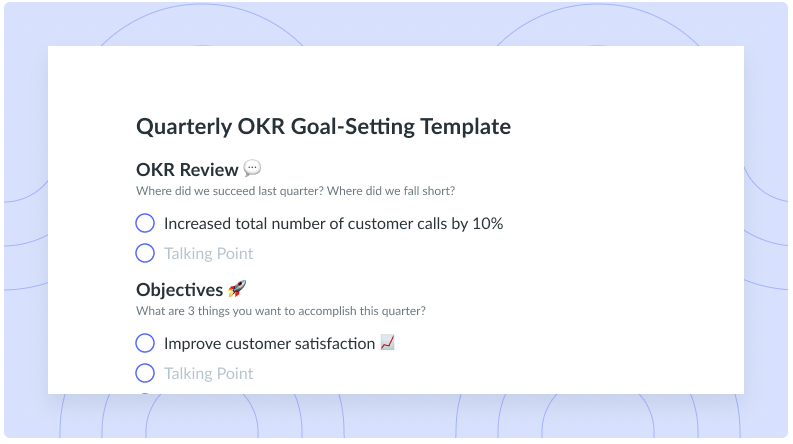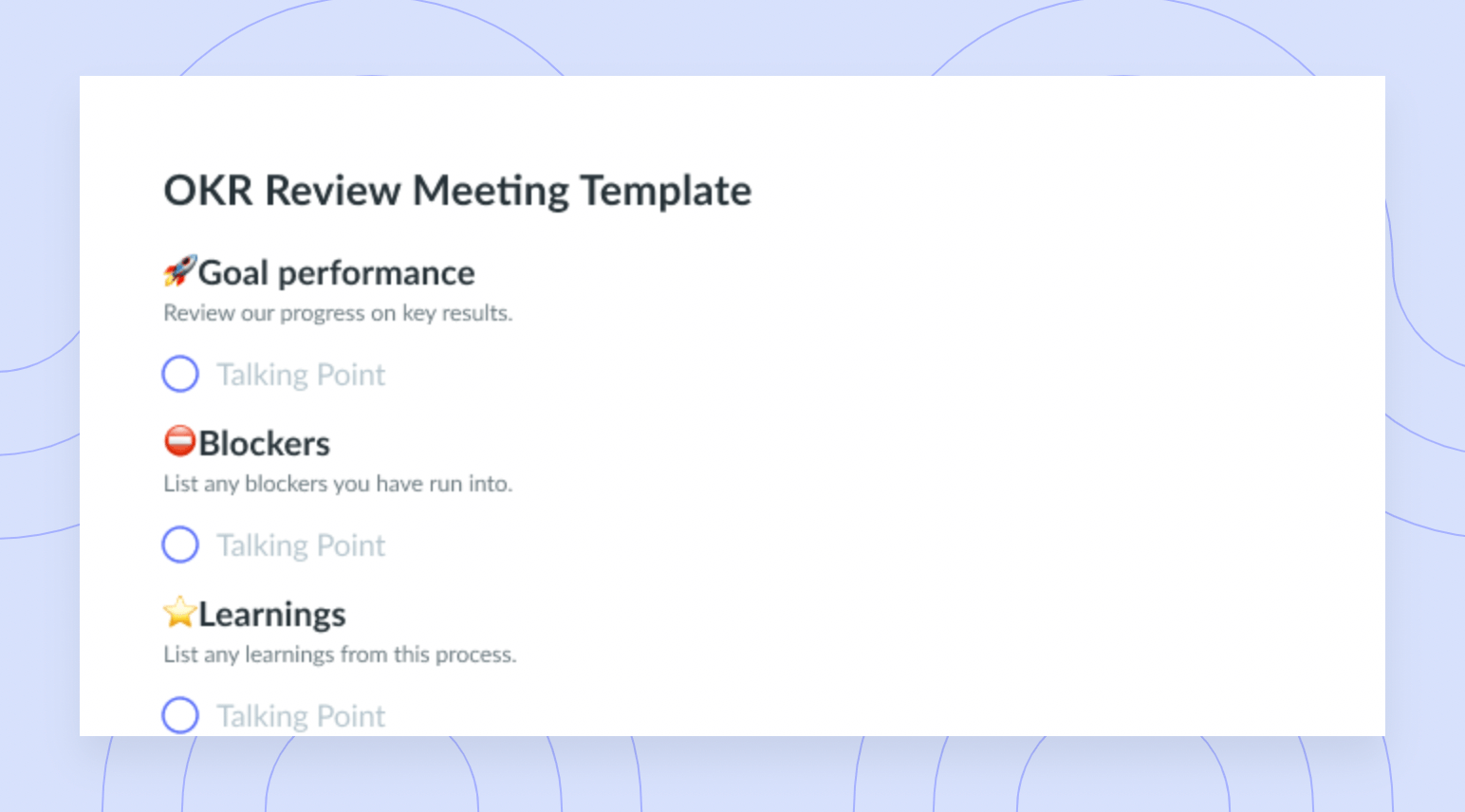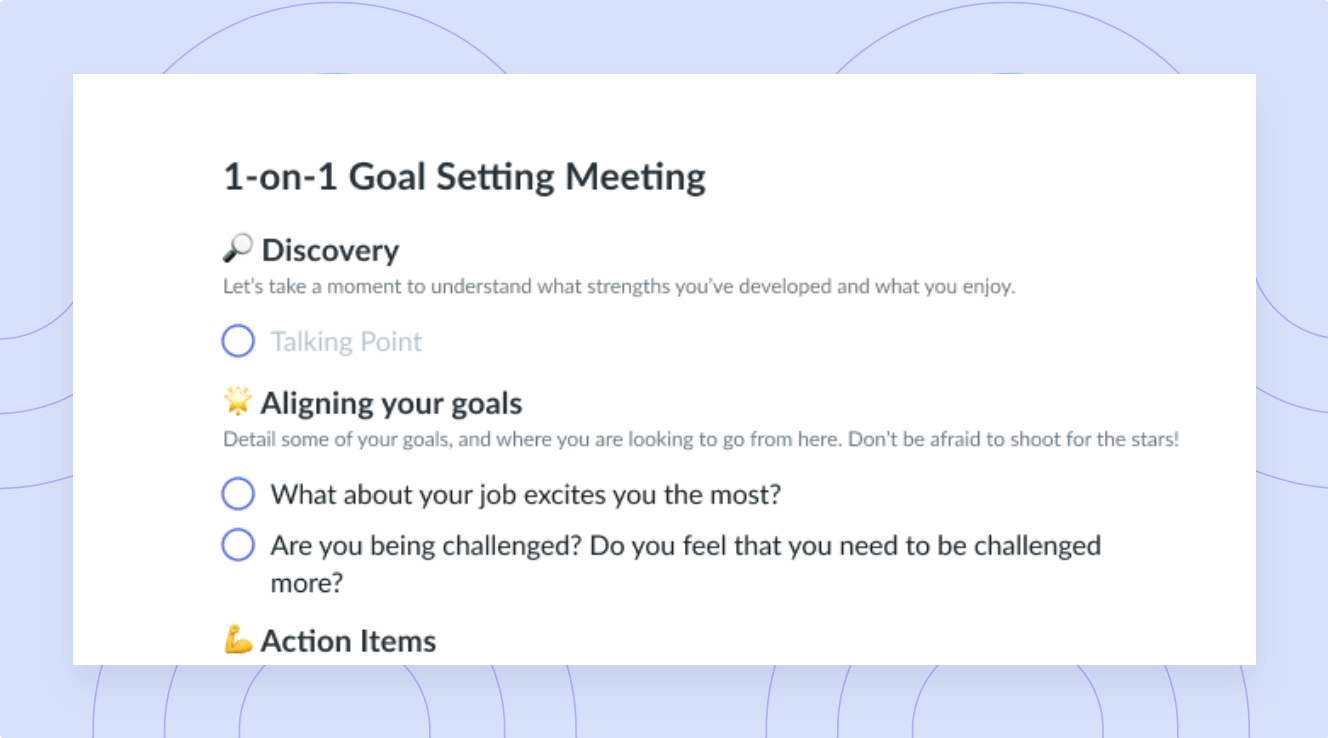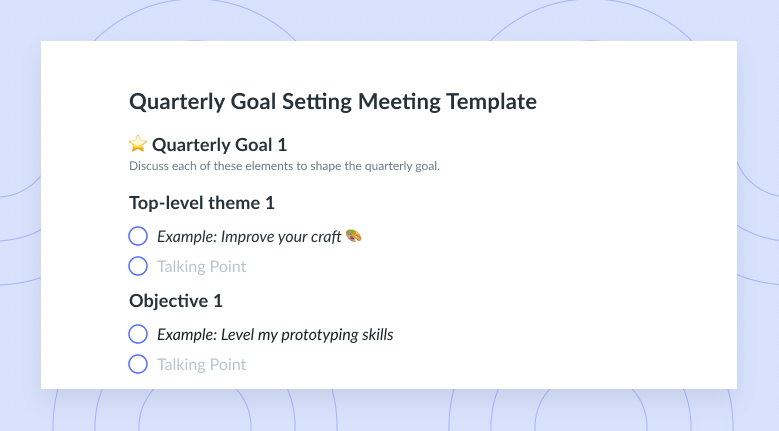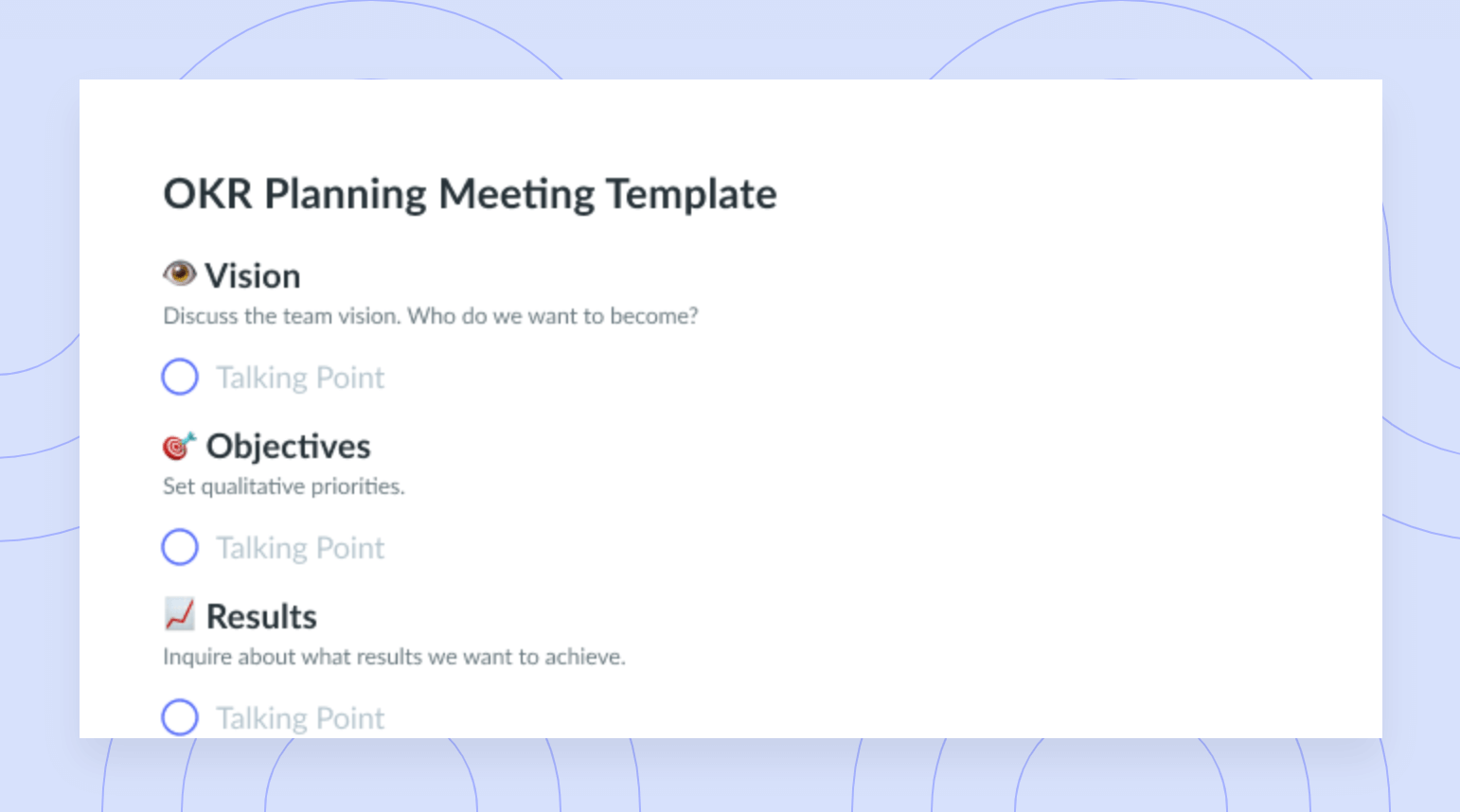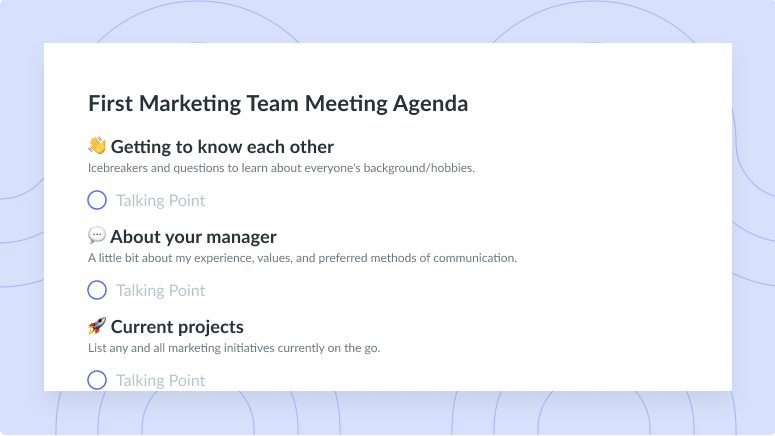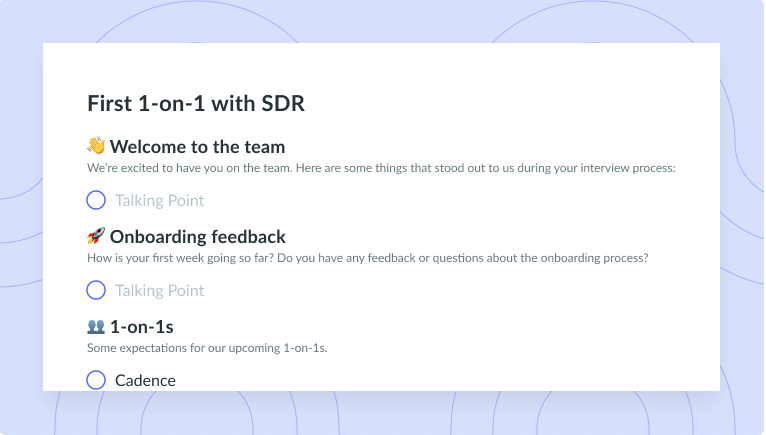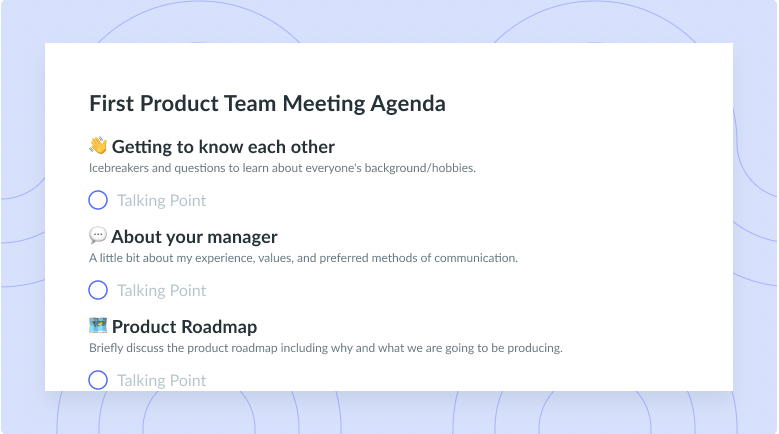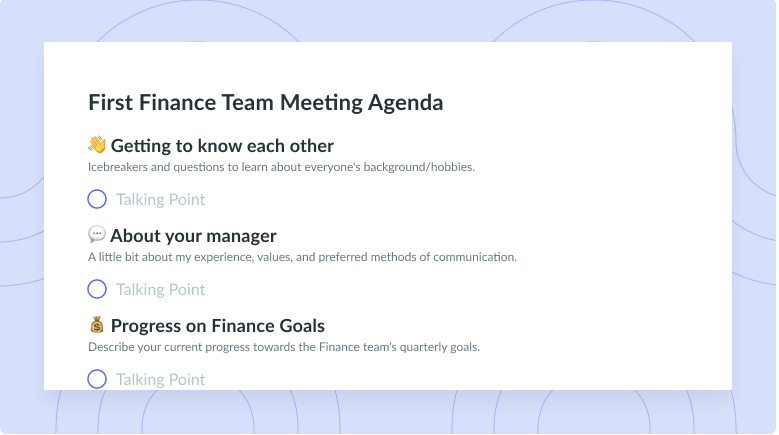OKR Setting: How-to Guide to Effective OKRs in 2023
Get your whole team on track with a clear roadmap to establishing and completing company goals in 2023. Learn everything to know here!
Does your company have big goals, but you aren’t sure how to mobilize your team to meet them? Research from Harvard Business Review found that, on average, 95 percent of a company’s employees don’t understand its strategies. This statistic explains why many businesses can set goals but manage to get stuck in the execution process. Your team can only perform as well as they understand your goals and how to achieve them.
OKR setting is a goal implementation strategy that can help you clearly define your goals, set specific expectations for your employees, and track progress among your teams. In this article, you’ll learn how to use this goal-setting framework to help you achieve some of your company’s most ambitious goals.
- What does OKR mean?
- Who created the OKR methodology?
- How do you set great OKRs?
- What is the difference between OKRs and KPIs?
- 6 Tips to effective OKR setting
- Free OKR templates
What does OKR mean?
The OKR methodology is what managers, teams, and individuals use to set and define objectives within their organizations. Objectives and key results (OKRs) are metrics that give your team a layout of your goal and how you plan to achieve it. Objectives are the “what” in this framework. They state the goal you want to accomplish. They’re ambitious and push your team to expand their capabilities.
Key results are like stepping stones. They’re the “how” of this methodology. Key results are measurable and give you a way to track your team’s progress and how close they’re getting to reaching the larger objective. They also describe the smaller steps your team needs to complete those goals.

Stay on top of your goals.
Never forget about decisions made or action items due by having one source of truth for all of your goals with a tool like Fellow.
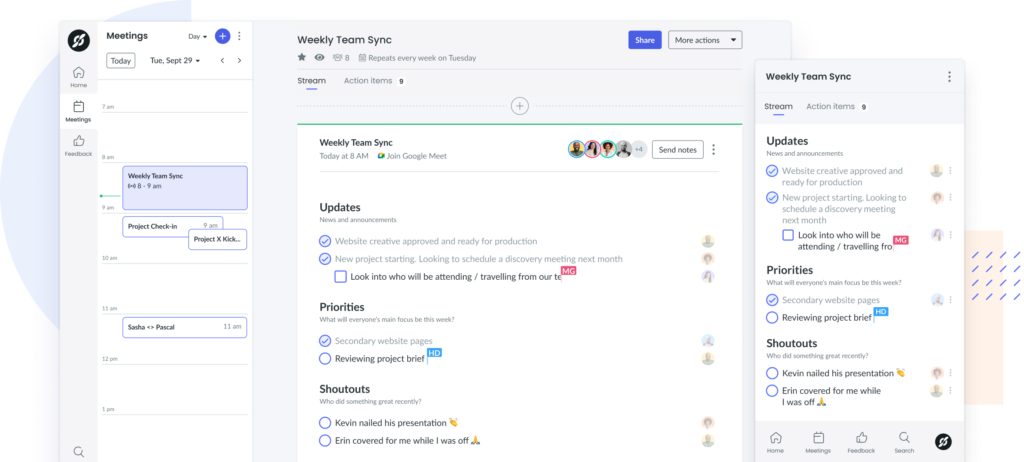
Who created the OKR methodology?
OKR has a bit of a two-fold origin story. Peter Drucker, a management consultant and business author, developed the concept of using objectives as a management strategy in his book, “The Practice of Management.” This 1954 publication presented and detailed the term “Management by Objectives” (MBO), which has become an entirely separate management technique from OKR.
In 1983, Andrew Grove, the co-founder and former CEO of Intel, formed the modern-day OKR methodology. Expanding on Drucker’s ideas, Grove published a book titled “High Output Management.” He wrote, “A successful MBO system needs only to answer two questions: ‘Where do I want to go?’ and ‘How will I pace myself to see if I’m getting there?’” Here, Grove explained the concept behind OKR, stating that goals need to have measurable milestones attached to them. This way, the goal (or objective) is actionable, and teams can monitor their progress toward it.
How do you set great OKRs?
Now that you have a solid understanding of this goal-setting methodology, you might be wondering how to incorporate it into your team’s workflow. OKR requires some strategic planning and management, but by following the below steps, you can help your team and entire organization reach impactful goals with meaningful OKRs.
- Determine your goal
- Define your objective and key results
- Ensure your goal is feasible
- Attach numbers to your key results
- Set a timeline
- Create a grading scale
1 Determine your goal
Setting OKRs starts with determining the goal you want to achieve. Your objective should be something your employees can actively work toward and not an abstract concept. For example: A CEO tells her team she wants to expand her company’s reach. The problem with this objective is that it’s vague, subjective, and merely presents an idea. To make this objective more direct and actionable, you should:
2 Define your objective and key results
The CEO in the above example could revise her statement to say she wants to sell products to 10,000 new customers over the next two months. This way, she expands her idea into an actual goal, and her employees know exactly what their actions should produce (10,000 sales).
3 Ensure your goal is feasible
To prompt your team to action, your objective should also be feasible. While OKRs are meant to push your team to new levels, they shouldn’t drain your employees of their motivation or productivity. Unattainable goals can degrade the quality of your employees’ work. However, the right balance of ambition and practicality in an objective can inspire your team members to put in their best efforts while positioning them for success.
4 Attach numbers to your key results
After defining your objectives, you’ll need to set your key results. Each key result should have a numerical value attached to it so your team has a specific idea of what they need to accomplish. For example, if a business owner’s objective is to open a second location, one of their key results might be to secure $75,000 in additional funding.
Another key result for this objective could be to receive 500 responses on a market research survey. With these key results, the owner can see how their teams are progressing toward accomplishing the objective.
5 Set a timeline
Your key results should also be time-bound so your employees can appropriately pace their work, and you can help keep your team on track. The CEO in the example above could decide to raise the funding within three months and complete the market research within one month. This way, the team knows how much time they have and need to reach each key result, preventing their work from dragging on indefinitely.
6 Create a grading scale
Finally, you should create a grading scale to measure your team’s success on each of the key results. You can grade them on a scale of 0 to 1.0, with a grade of 1.0 meaning your team fully achieved a result. Grading each of your key results allows you to gauge how well your team is accomplishing their objective. After taking the average of these grades, you can determine if you need to adjust your goal.
What is the difference between OKRs and KPIs?
MBOs, OKRs… How many acronyms can there be? There are quite a few, and KPIs are another method to add to the list. KPIs, or key performance indicators, are metrics that measure your company’s performance. You can use KPIs to see how your organization has improved over a period of time and identify where you can make improvements.
The key difference between OKRs and KPIs is their purpose. OKRs set ambitious goals and list specific steps to help your team reach them. They focus heavily on objectives and expected outcomes. OKRs are all about growth and expanding your team’s capabilities.
KPIs, on the other hand, are less about setting goals and more about assessing the success of current processes within your organization. They can look at programs your company runs, workflows your team uses, or even how well an individual employee is performing. Examples of KPIs include monthly website traffic, customer satisfaction ratings, the number of new sales leads, and net sales. Basically, a KPI is any measurement that allows you to track your company’s functions.
In short:
- Key performance indicators (KPIs) measure your company’s performance.
- KPIs help you analyze your processes and employee performance over time – and determine how to improve both.
- Objectives and key results (OKRs) are long-term goals and the potential steps your team must take to achieve them.
- OKRs drive company growth and expand what your team can do.
6 Tips to effective OKR setting
OKRs can be a bit complex, so understanding this methodology is an accomplishment of its own. Now that you’ve made it this far, you might feel you’re ready to gather your team and start working toward some of these big objectives. The next step is to start creating powerful OKRs for your organization and employees. Before you set up your first team meeting, consider these tips to help you get the most out of your OKRs.
- Put the customer first
- Don’t skimp on ambition
- Tie OKRs to larger company goals
- If you can’t measure it, it’s not a good KR
- KRs are outcomes — not tasks
- Assign KR owners
1 Put the customer first
To help you set relevant OKRs, try using a customer-first approach. Otherwise, you could end up spending time and effort working toward an objective that distracts you and your teams from the people your company serves.
2 Don’t skimp on ambition
As you define an objective, make sure that it’s one that will challenge your team. If your teams are reaching all their goals, then your objective is probably too easy. Because of their difficulty, good OKRs typically have about a 60 to 70 percent success rate.
3 Tie OKRs to larger company goals
Creating high-level company OKRs can be a great way to help your organization tackle some of its largest goals. The key results you set will require efforts from each of your teams. With company-wide OKRs, you’re not just advancing your company as a whole. You’re also pushing each of its many parts forward.
4 If you can’t measure it, it’s not a good KR
If your key results aren’t measurable, monitoring your teams’ progress could be quite difficult. The primary purpose of key results is to serve as metrics, giving your teams specific steps to work toward and a way for you to view their progress.
5 KRs are outcomes — not tasks
While you can create tasks to help your team achieve your key results, these parts of OKRs aren’t meant to be individual items on a to-do list. Key results are the outcomes you expect to see from your team’s hard work.
6 Assign KR owners
Tracking OKRs can involve monitoring several teams, each with its own tasks and assignments. To help you manage the process, assign an owner to each of the key results. This person will oversee monitoring teams’ progress toward that particular result, allowing you to gather updates without monitoring every moving part.
Pro Tip: With Fellow, each team member can create their own private or public OKRs or create team-wide objectives. All they’ll need to do is visit the My Objectives section.
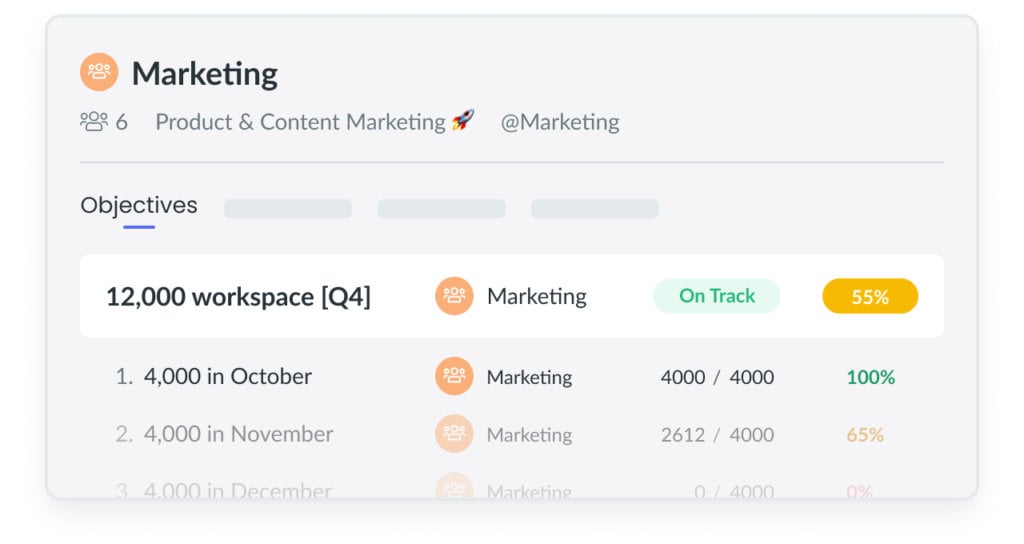
Free OKR templates
The foundation is set, and you’re ready to start defining some big goals for your company and getting your team on board with the process. If starting a new methodology still seems a little daunting, Fellow has an OKR template to help you create actionable, customer-centered objectives. This template includes an OKR checklist to help you conduct team performance reviews, efficiently monitor your team’s progress. It also has sections where you can clearly outline your objective and each of your key results, so everyone is on the same page.

Achieve your biggest goals with OKR setting
The purpose of OKRs is to make goals that once seemed impossible, possible. By clearly defining objectives and setting measurable key results, you can inspire your team to reach greater levels of innovation and productivity, advancing your company in ways you only imagined. At every step along the way, Fellow can assist you and your team with planning engaging meetings, creating effective action items, and so much more. Achieving your goals just became a lot easier.





![Everything You Need to Know About Sales OKRs [+ Examples]](https://fellow.app/wp-content/uploads/2022/05/sales-okrs.jpg)



